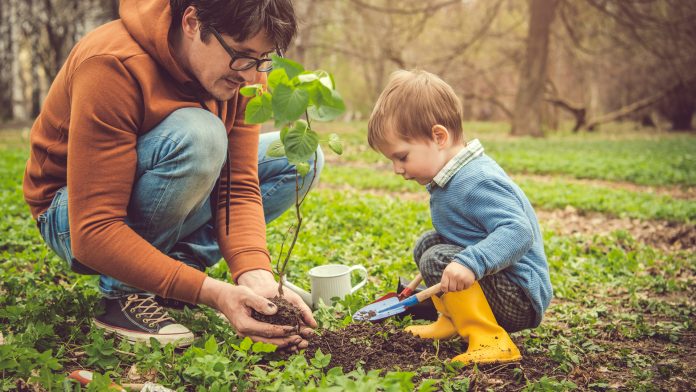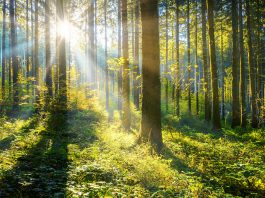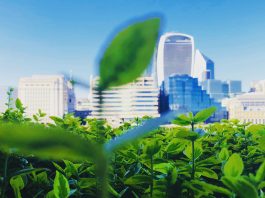A new long-term passive rewilding study has indicated that the tree-planting targets of the UK could be attained via natural woodland regeneration methods.
A new long-term passive rewilding study has indicated that the tree-planting targets of the UK could be attained via natural woodland regeneration methods.
The study, led by the UK Centre for Ecology & Hydrology (UKCEH), has revealed that the UK’s elaborate tree-planting targets could potentially be achieved through natural growth, with birds, wind, and mammals naturally dispersing seed to obtain resilient and biodiverse woodland.
The proposed tree-planting strategy would be performed at virtually no cost and with extreme efficiency, eliminating some of the expensive factors of other tree-planting schemes such as management and plastic tubing.
The study is published in the journal PLOS ONE.
The researchers discovered that, within 15 years, agricultural fields that were baron wastelands grew into wildlife-rich shrubland – developing native closed-canopy oak, field maple, and ash trees after 40-50 years, displaying densities of up to 390 trees per hectare.
Meeting the UK government’s tree-planting objectives will be highly costly to the taxpayer, as they are aiming to plant 30,000 hectares of woodland each year by 2025, with the Northern Forest planned between Liverpool and Hull estimated to cost around £5.7 million.
Although natural regeneration is dependent on the presence of existing woodland or mature trees, making it unsuitable for some sites, the integration of passive rewilding into national tree-planting targets could greatly reduce costs.
Dr Richard Broughton of UKCEH, who led the study, says: “Biodiversity-rich woodland that is resilient to drought and reduces disease risk can be created without any input from us. Our study provides essential evidence that passive rewilding has the potential to expand native woodland habitat at no cost and within relatively short timescales.
“Natural colonisation could play a significant role in helping to meet the UK’s ambitious targets for woodland creation, as well as nature recovery and net-zero greenhouse gas emissions by 2050. It is an effective option for expanding woodland in many places without the costs of planting, the disease risk of transporting nursery-grown saplings, or using plastic tree tubes that are unsightly and pollute the environment.”
Dr Broughton also reiterates the vital role of natural seed dispersers such as wind, mammals, and birds –especially jays, commonly regarded as pests due to their predation of other birds.
“The huge benefits that jays provide in natural colonisation by dispersing tree seeds, especially acorns, helps to create more woodland habitat for all wildlife and far outweighs any impact of predation,” he added.
To conduct their study, the team examined woodland development throughout two former agricultural fields for 24 and 59 years, respectively, the first being a two-hectare abandoned grassland from 1996 and the other a four-hectare barley field abandoned in 1661, both of which are in proximity to Monks Wood National Nature Reserve. Tree and shrub growth has been examined closely in Monks Wood for several decades, with field surveys, vegetation heights, and spatial cover through remote sensing data all regularly utilised.
The researchers distinguished that developing woodland was not affected by herbivores, therefore not requiring additional fencing, with bramble and thorn shrubs demonstrated to protect the initial growth of young trees, which was also resilient to periods of drought in dry summers.









